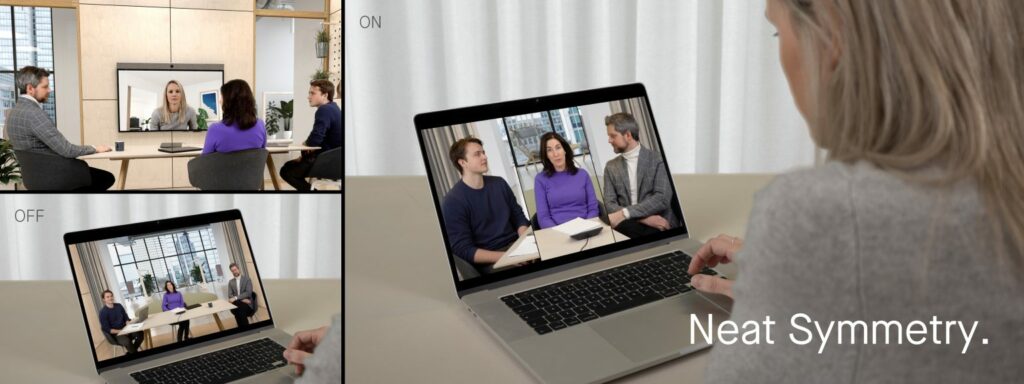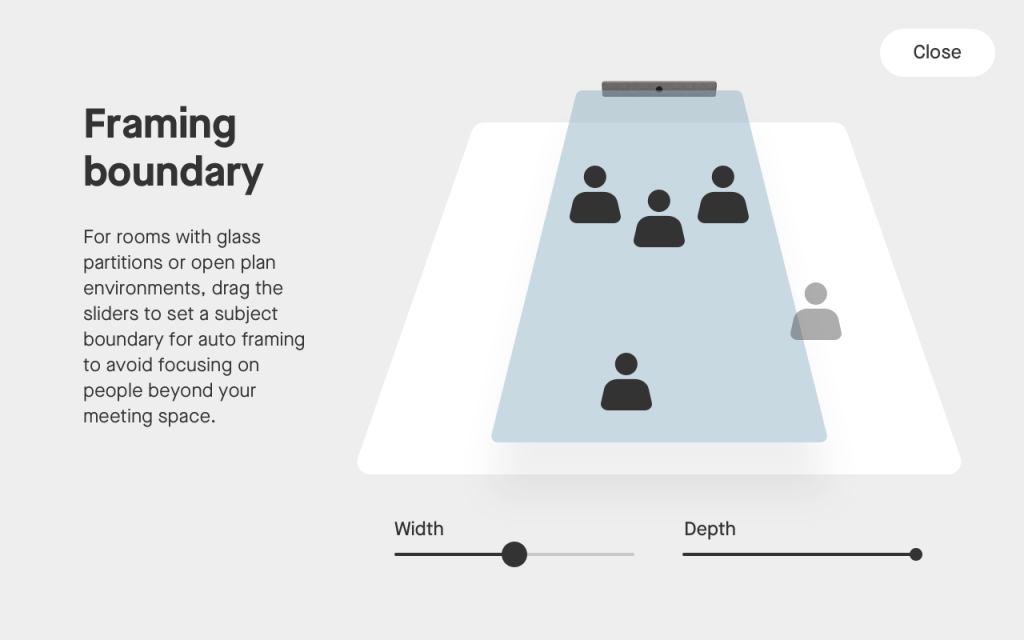
How AI-powered video meetings make ‘hybrid’ more human

The way businesses run meetings has been completely transformed over the last few years. What used to involve running to get to a boardroom on time, squeezing a chair around a packed table and shuffling through printed agendas now just requires sitting down with a laptop and pressing ‘Join Meeting’.
The widespread adoption of hybrid working patterns means that employees can now attend meetings from anywhere and even continue with other work while listening in. Attendees hop in and out to give their input only when necessary, saving time for other important tasks. All this can be done from the comfort of the home office, kitchen table, or even sofa – wherever they work best.
While we learned quickly how to schedule meetings, mute our microphones and turn off our cameras, there were certainly some teething problems with this new way of collaborating. Viral clips of children causing chaos and serious wardrobe malfunctions in the background of virtual meetings illustrate how the video conferencing solutions we had to quickly learn to use were not perfect straight out of the gate.
When fully remote meetings started transitioning into hybrid ones, which involved a group of attendees huddled uncomfortably in front of a camera in the boardroom, a new issue emerged – ‘meeting inequity’. While remote attendees were perfectly framed in front of their webcam, the view of the people in the office was poor; at worst, just a cluster of pixels. On the flip side, when the people in the office spoke amongst themselves, those joining remotely had to lean deep into their laptops, straining to hear what was being said.

Source: Shutterstock
It’s not surprising that studies have proven what we know intuitively to be true; it’s easier to generate ideas face-to-face, and so dynamic, blue-sky thinking tends to occur more naturally in the physical meeting space.
So, how can we overcome these challenges? With virtual meetings here to stay – they’ve tripled since February 2020 – it’s surely a priority for businesses today.
“Having a device that allows you to build an environment where you can all collaborate is really important,” said Niko Walraven, the Regional Director for the APAC region video conferencing solution provider Neat.
Neat has incorporated artificial intelligence (AI) into all its products to better facilitate hybrid meetings. Take Neat Bar, for instance, a video conferencing device with Neat Symmetry, which accurately detects the location of everyone in the office meeting room with intelligent algorithms that process sensor data. The camera then zooms in and auto-frames each individual, picking them out from the group and presenting them up close on the screens of remote participants. It even continues to follow them as they sit, stand and walk around, enabling people working remotely to interpret their body language much more easily.

Source: Neat
This isn’t the only intelligent software installed into Neat products. Neat Boundary enables users to set the width and depth of their meeting space so that the video conferencing hardware only auto-frames those involved in the video call. This is particularly useful in open-plan offices and glass-walled meeting rooms. Minor distractions like the camera flicking away to an unwilling participant can cause significant disruption to the flow of the ideas, so the feature ensures a focused meeting environment, even in busy settings.

Framing Boundary: ‘How it works’ visual demo Source: Neat
Neat is further bridging the division between home-workers and those in the office by making its video conferencing solutions as simple and user-friendly as possible. Any Neat device can be set up in a communal area, like a kitchen or break room, and it will automatically wake up when someone steps in the pre-set boundary zone. The screen brightens, the mic and speakers unmute, and the camera frames the person so they can connect with a remote worker with just the tap of a button. This helps remote workers participate in brief ‘water cooler’ chats and mini brainstorms they may otherwise miss out on. The same auto-wake feature works in meeting rooms, too, removing the awkward set-up step that often takes place at the start of hybrid meetings and allowing all colleagues to connect immediately.
Research has shown that 64 per cent of employees worldwide value collaboration spaces set up specifically for hybrid meetings, which is echoed in Mr Walraven’s vision of things to come: “I think the future is more flexibility in different workspaces around the office.”
Explore its award-winning product range today to find out how Neat can make this vision a reality.
READ MORE
- 3 Steps to Successfully Automate Copilot for Microsoft 365 Implementation
- Trustworthy AI – the Promise of Enterprise-Friendly Generative Machine Learning with Dell and NVIDIA
- Strategies for Democratizing GenAI
- The criticality of endpoint management in cybersecurity and operations
- Ethical AI: The renewed importance of safeguarding data and customer privacy in Generative AI applications
